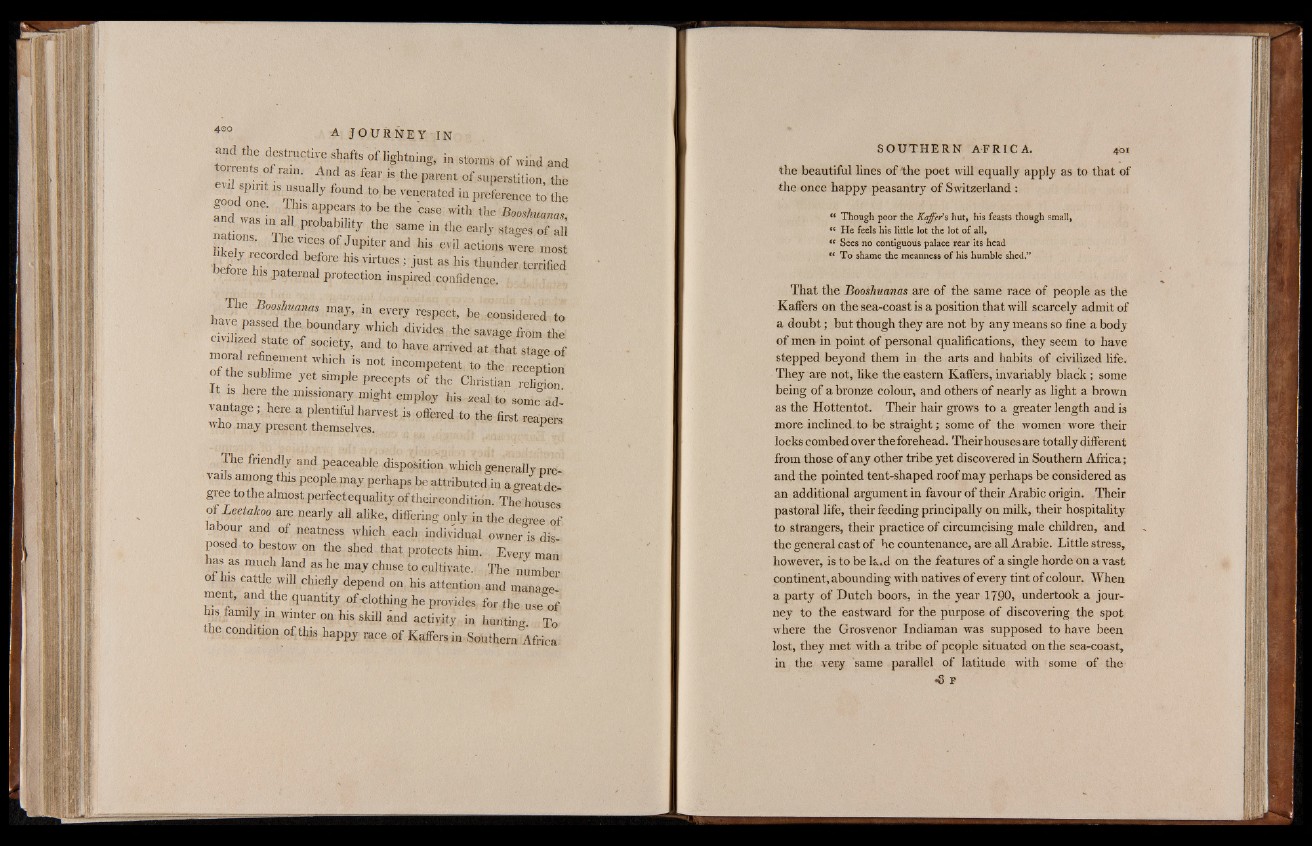
Sfegl *-r?? ill I9HI IH I wind m
s o ram. And as fear is the parent of superstition the
™ d o„"e ailj f°“nd T * V“ e" good one. This appears to be the cas“e Cwd i“th Pt'hrfee Breo"o“sh u«an«as•
and was in all probability the same in the early stages of all
£ 2 7 * a ' / 1“ 8ofJupi,erand *
b etofroe rheisS p3atSer naIl 0p"ro1 t"e*ct *io*n “insp! ijrueSdt cMon hfiids etnl™ce, fja O rtfc d
The Booshuanas may, in every respect, be considered to
iave passed the boundary which divides, the savage from the
mcivoirlaizl erde fis tate oft s^ociety , a^nd to have arrJive d at thaJt s taaggee ooff
of the sublime yet simple precepts of the Christian relirion
is here the missionary might employ his zeal to some advantage
; here a plentiful harvest is offered to the first reapers
who may present themselves. 1
The friendly and peaceable disposition which generally prevails
among this people may perhaps be attributed in a great degree
to the almost perfect equality of their condition. The houses
of Leetakoo are nearly all alike, differing only in the degree of
labour and of neatness which each; individual owner is disposed
to bestow on the shed that protects him. Every man
as as much land as he may chuse to cultivate. The number
o is cattle will chiefly depend on, his attention and management,
and the quantity ofclothing he provides, for the use of
% family m winter on his skill and activity, in hunting. To
the condition of this happy race of Kaffers in Southern Africa
the beautiful lines of th e poet will equally apply as to that of
the once happy peasantry of Switzerland :
“ Though poor the Kajfev*s hut, his feasts though small,
<c He feels his little lot the lot of all,
(e Sees no contiguous palace rear its head
“ To shame the meanness of his humble shed.”
That the Booshuanas are of the same race of people as the
Kaffers on the sea-coast is a position that will scarcely admit of
a doubt; but though they are not by any means so fine a body
of men in point of personal qualifications, they seem to have
stepped beyond them in the arts and habits of civilized life.
They are not, like the eastern Kaffers, invariably black; some
being of a bronze colour, and others of nearly as light a brown
as the Hottentot. Their hair grows to a greater length and is
more inclined to be straight; some of the women wore their
locks combed over theforehead. Their houses are totally different
from those of any other tribe yet discovered in Southern Africa;
and the pointed tent-shaped roof may perhaps be considered as
an additional argument in favour of their Arabic origin. Their
pastoral life, their feeding principally on milk, their hospitality
to strangers, their practice of circumcising male children, and
the general cast of he countenance, are all Arabic. Little stress,
however, is to be la.d on the features of a single horde on a vast
continent, abounding with natives of every tint of colour. When
a party of Dutch boors, in the year 1790, undertook a journey
to the eastward for the purpose of discovering the spot
where the Grosvenor Indiaman was supposed to have been
lost, they met with a tribe of people situated on the sea-coast,
in the very same parallel of latitude with some of the
•8 F